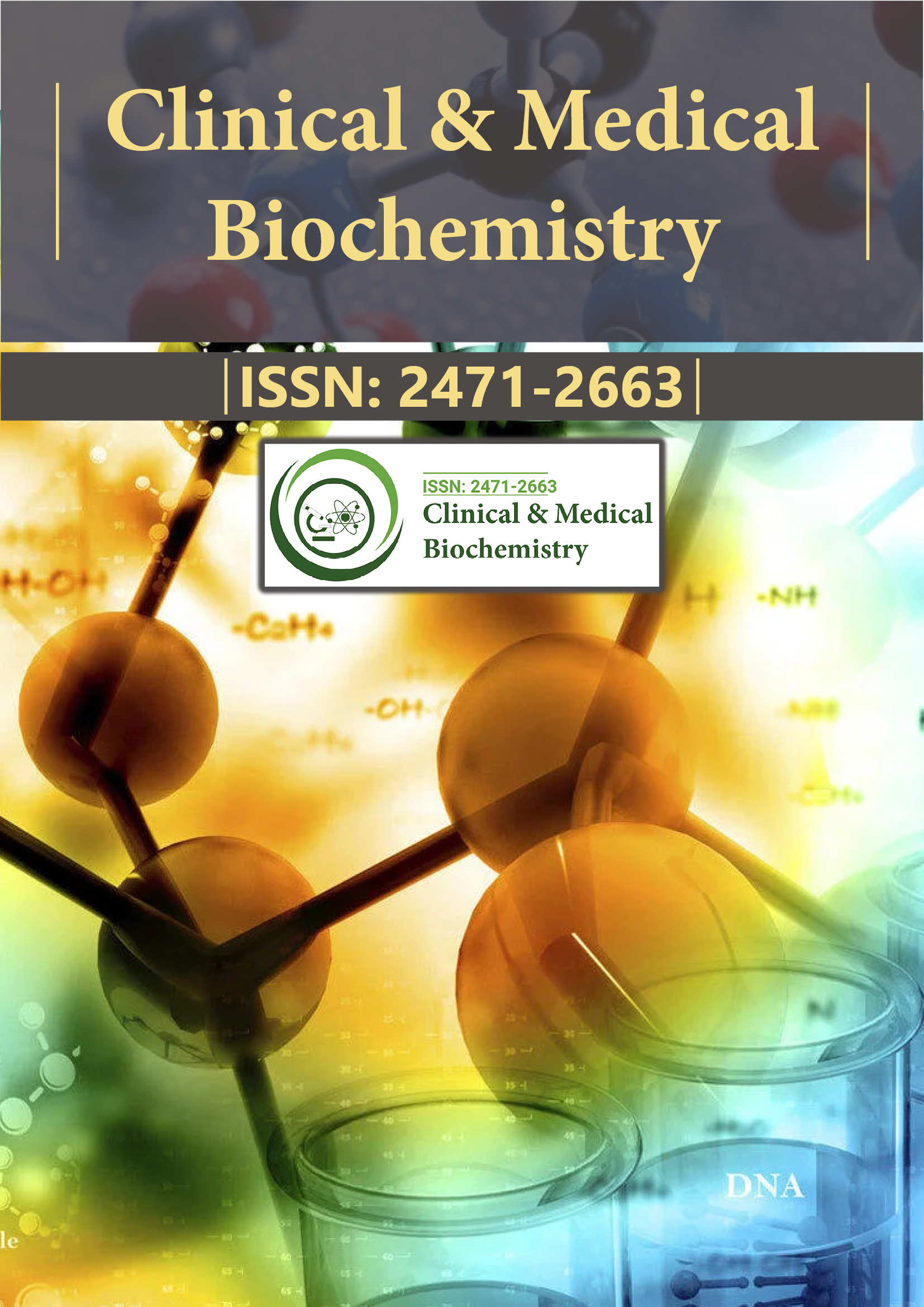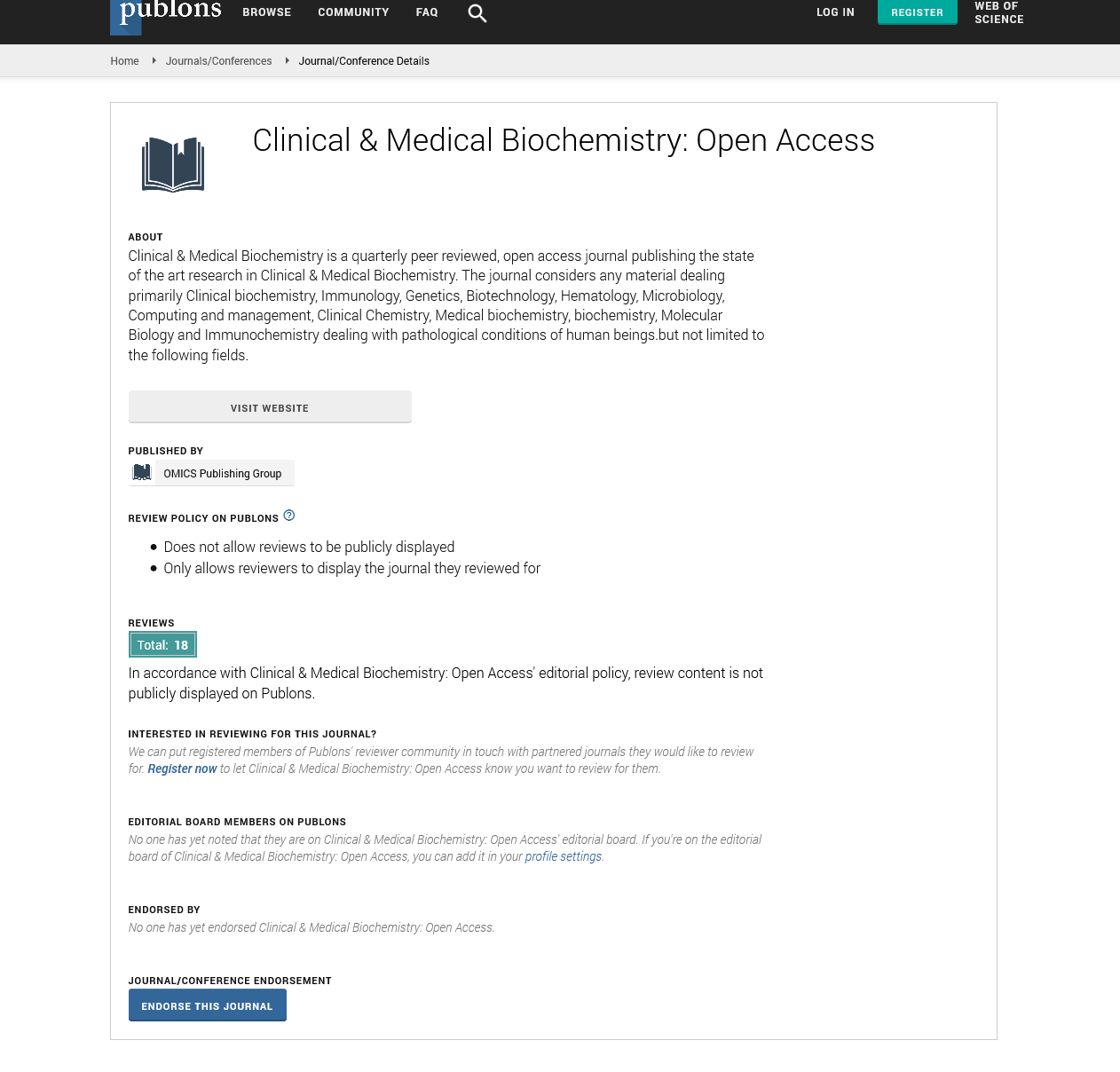Indexed In
- RefSeek
- Directory of Research Journal Indexing (DRJI)
- Hamdard University
- EBSCO A-Z
- OCLC- WorldCat
- Scholarsteer
- Publons
- Euro Pub
- Google Scholar
Useful Links
Share This Page
Journal Flyer

Open Access Journals
- Agri and Aquaculture
- Biochemistry
- Bioinformatics & Systems Biology
- Business & Management
- Chemistry
- Clinical Sciences
- Engineering
- Food & Nutrition
- General Science
- Genetics & Molecular Biology
- Immunology & Microbiology
- Medical Sciences
- Neuroscience & Psychology
- Nursing & Health Care
- Pharmaceutical Sciences
Perspective - (2022) Volume 8, Issue 6
Advances and Immunological Mechanism Involved in Adaptive Immunity
Herwald Fernández*Received: 17-Oct-2022, Manuscript No. CMBO-22-18991; Editor assigned: 20-Oct-2022, Pre QC No. CMBO-22-18991 (PQ); Reviewed: 09-Nov-2022, QC No. CMBO-22-18991; Revised: 18-Nov-2022, Manuscript No. CMBO-22-18991 (R); Published: 28-Nov-2022, DOI: 10.35841/2471-2663.22.8.141
Description
The primary immune defence against an active infection is said to be innate immunity. It is a rapid immunological reaction with no immunologic memory that is started within minutes or hours after action. Inversely, adaptive immunity is antigen-dependent and antigen-specific; it has the ability to form memories, allowing the host to generate a more effective immune response when exposed to the antigen again. Both the innate and adaptive immune systems collaborate closely, and dysfunction in any system can result in illness or disease. When a person's immune system responds to a foreign substance or microorganism, such as during an infection or vaccination, this form of immunity develops. Specialized immune cells and antibodies that attack and eliminate foreign cells are a part of adaptive immunity.
However the human immune system is not perfect in some cases, our natural defenses fall prey to parasites and bacteria, and in the case of cancer and (autoimmune) inflammatory diseases, and they even work against antibodies. Immature B and T cells go through antigen receptor gene rearrangements during development to produce an extremely wide repertoire with a set of antigen-specific receptors that can identify any conceivable antigen. Long-lived memory lymphocytes that are unique towards the pathogen are produced following pathogen destruction and cellular contraction.
Antigen-specific defensive mechanisms that take several days to develop into protective and are intended to get rid of a particular antigen are referred to as adaptive immunity. Throughout life, one develops their immunity. Innate immunity and adaptive immunity are the two main categories of immunity (humoral immunity and cell-mediated immunity). The genetic regulation of immunoglobulin, T cell, and B cell mediated immunity. Since adaptive immune responses are made to destroy microbes and the poisons and enzymes they produce, they must be targeted against molecules that are external and not against its structural or functional components. The Major Histocompatibility Complex (MHC) system allows the adaptive immune system to discriminate between self- and foreign substances.
The immune system's area can be divided into innate and adaptive components, which work together to respond to external antigens or to perform self/nonself classification, has become significantly more complicated. New thoughts and a new environment in which the immune system forms cross communication with other critical systems, such as the endocrine and neurological systems, pathogenic microbes, and immunological components have been made possible by the development and utilization of new technologies. Because adaptive immunity is antigen-dependent and antigen-specific, it takes longer between exposure to the antigen and the maximum response. The potential for memory, which permits the host to produce a more quick and effective immune response upon subsequent exposure to the antigen, is the distinct feature of adaptive immunity. Pathogen-specific receptors are acquired during an organism's lifetime by adaptive immunity (whereas in innate immunity pathogen-specific receptors are already encoded in the genome). Although this acquired response can also be maladaptive if it leads to allergies or autoimmune diseases, it is referred to be adaptive because it changes the body's immune system from upcoming risks.
Conclusion
Innate immunity is the first immunological, those defence against the infections. The complement system, along with phagocytes, mast cells, basophils, and eosinophils, are responsible for regulating this rapid immune response, which takes place in minutes or hours after the initial injury. In order to fight infectious organisms, innate immunity and adaptive immunity involves. The closely controlled interactions of T cells, APCs, and B cells are essential for adaptive immunity. These discoveries have specifically been used with the most intensity and effectiveness in immunotherapy, autoimmunity, and vaccine development. The development of immunologic memory, or the ability of the system to learn from or record its encounters with different infections, is a crucial aspect of adaptive immunity and results in efficient and quick immune responses upon reexposure to the pathogen.
Citation: Herwald F (2022) Advances and Immunological Mechanism Involved in Adaptive Immunity. Clin Med Bio Chem. 8:141.
Copyright: © 2022 Herwald F. This is an open-access article distributed under the terms of the Creative Commons Attribution License, which permits unrestricted use, distribution, and reproduction in any medium, provided the original author and source are credited.

